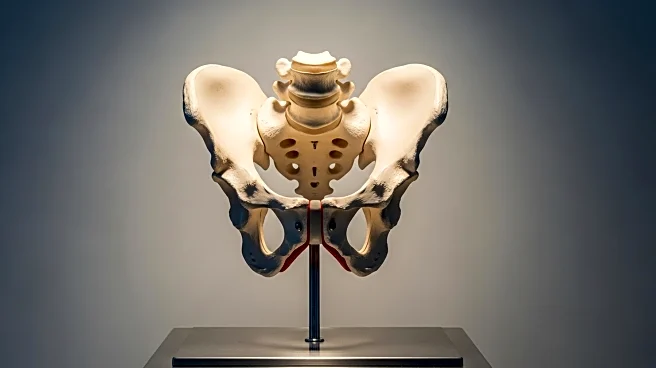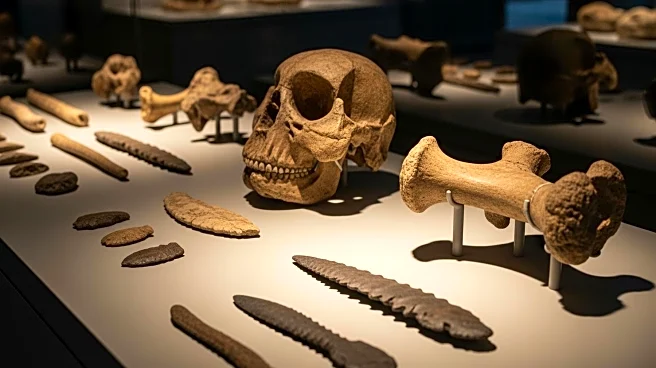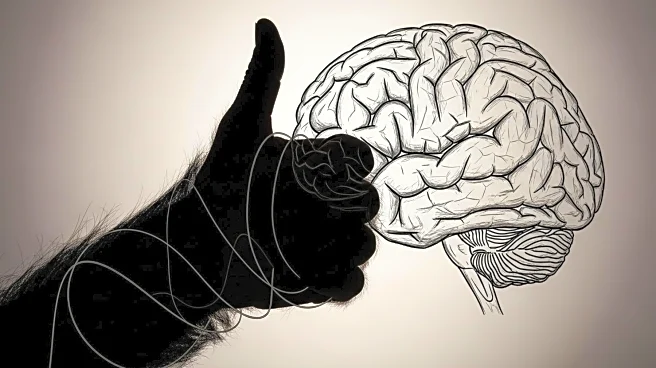What's Happening?
Harvard researchers have discovered two significant pelvic shifts that were crucial in enabling humans to walk upright. The study highlights how the reorientation of growth plates transformed the human ilium from a tall and narrow structure to a short, wide, and curved form. This transformation resulted in the bowl-shaped pelvis that is essential for bipedal locomotion. The findings provide insight into the evolutionary changes that differentiated humans from other great apes, whose skeletal structures are displayed at the University of Cambridge Museum of Zoology.
Why It's Important?
The research conducted by Harvard scientists sheds light on a pivotal aspect of human evolution, offering a deeper understanding of how anatomical changes facilitated the development of bipedalism. This advancement not only distinguishes humans from other primates but also has profound implications for the study of human anatomy, evolution, and anthropology. Understanding these evolutionary shifts can enhance knowledge in fields such as medicine, biomechanics, and robotics, where human movement and structure are critical.
What's Next?
Further research may explore the genetic and environmental factors that influenced these pelvic shifts, potentially leading to new insights into human evolution. Scientists might also investigate how these anatomical changes have impacted other aspects of human physiology and development. The findings could inspire interdisciplinary studies that connect evolutionary biology with modern medical and technological applications.
Beyond the Headlines
The study raises questions about the ethical considerations of using evolutionary biology to inform modern practices, such as genetic engineering or biomechanical design. It also prompts discussions on the cultural significance of human evolution and how these scientific discoveries can influence societal perceptions of human identity and history.












